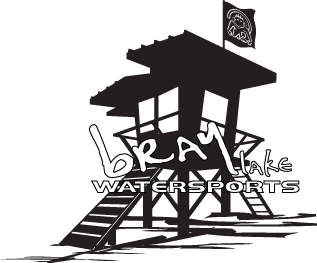SUPBALL (Stand Up Paddle Ball) is a combination of netball, water polo, lacrosse, and rugby – played on stand up paddle boards. This game will push you to your limits, keep your strategic edge on full throttle and make you laugh like never before!
For many seasons, SUPBALL creators, Manly Kayak Centre in Australia had played their own version of Kayak Polo, known as Kayball. This innovative sport was played as an activity within the Kayak Centre’s fitness program. Unlike Kayak Polo, Kayball used round buoys for goals instead of floating nets, and was played with no stoppages unless a injury or a capsize occurred. When a goal was scored (by hitting the opposing team’s buoy with the game ball), the scoring side had to retreat back around their own buoy/goal to enable them to be deemed onside and continue playing.
Manly Kayak Centre purchased its first fleet of standup paddleboards (SUPs) in early October 2010 when they recognised the emerging standup paddleboard trend. Over the course of the following weeks, boards were used by staff in their down time and this is where SUPBALL was born.
Match Format
- Matches are played between two teams of five heading in opposite directions with up to 5 substitue players
- A goal is scored by hitting the ‘SUPBALL goal buoys’ with the match ball
- SUPBALL has a unique continuous game play and an off side play allowing for very strategic tactics.
- Matches consist of two 15-minute halves with a 5-minute break. Teams swap directions at half time
- There is no boundary to a SUPBALL field
Rules
- There are two different versions of SUPBALL that you can play – contact and non-contact. Contact allows players to tackle or push other players off their boards, whereas non-contact only allows a player to nudge another player’s board with the paddle to destabilise the competing player
- Once a player is in possession of the ball they must stop paddling
- A player who doesn’t have 50% or more of their body on a board is deemed to be out of play until they get back on a board. Without being on a board they are not allowed to interfere with the ball or with other players
- No player can purposefully interfere with unoccupied equipment in order to disadvantage another player
- The defending player (player who has been tackled) has board advantage in any board challenge situation. Final decision on ANY board challenge will be made by the referee and cannot be contested
- Once a goal is scored two quick whistles will be sounded by the referee. The team who scored the goal must paddle around their defensive ‘goal buoy’ to be considered onside. Until they have done this they must not interfere with the ball or other players
- You may tackle players off their boards (contact) or destabalise a board with your paddles (non-contact), but no paddle-to-player contact is allowed
- No player is allowed to hug the goal with their body at any time. Players are permitted to block the goal with their paddle or board
- Once a player/players break a rule the referee will blow one blast of the whistle. The offending player will be signaled and will have to undertake a penalty paddle around a nominated penalty marker. The player is deemed offside until they have paddled around this marker. All other game play will continue and only this player is deemed offside for this time. If the player does not immediately embark on their penalty paddle they will be sent off court for 2 minutes in the sin bin
- The referee has the right to remove a player from the game if they continuously break the rules and their team will be short a player for the rest of that half of the game.
The following acts constitute rule-breaking behaviour:
- Foul play
- Unsportsmanlike behaviour
- Excessive force
- Any non-compliance with the listed SUPBALL rules
Tactics & Strategy
- You may play at the ball with your hands, paddle or any other part of your body
- Boarding other peoples boards is permitted during contact games. You may do this in order to knock another player off their board, steal the ball, block a goal etc.
- If unmarked, a short pass ahead of yourself is a good way move up the field with the ball legally
- Standing during the game is encouraged in all SUPBALL games. Trainers will aim to get all players to this level of game play during training sessions/SUPBALL Lessons
- Leaving a defensive player protecting your goal is effective not only in defence, but if your team scores a goal, this player can immediately retreat around the ‘goal buoy’ and rush forward to attack while the rest of their team is retreating to get onside.















